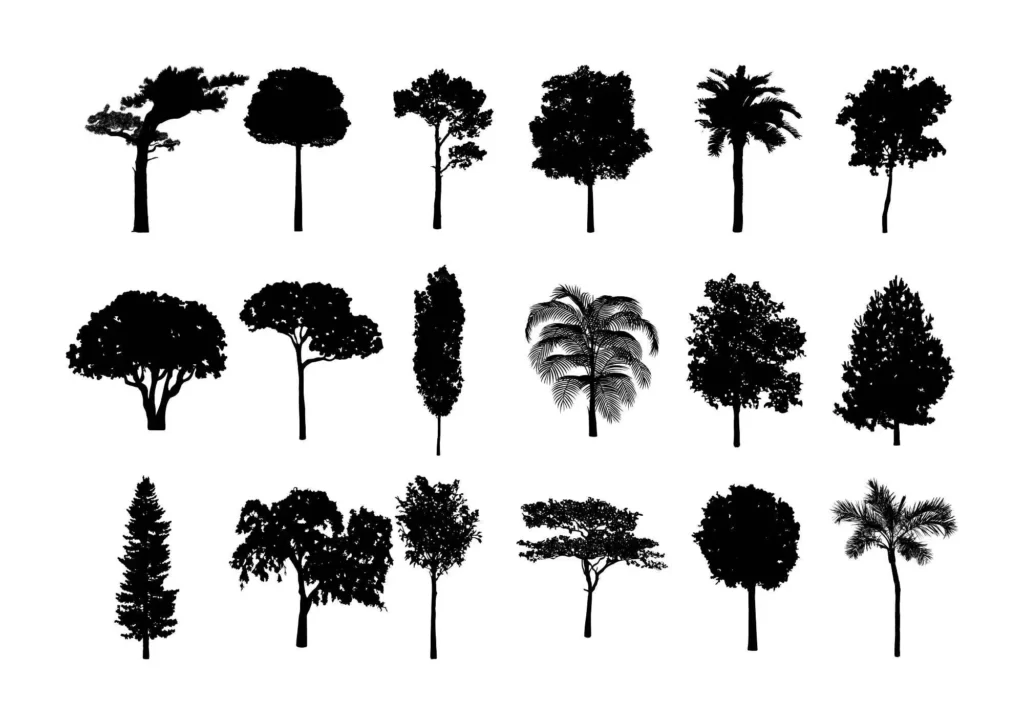
Hey there, nature lovers! Have you ever found yourself staring at a majestic tree and wondered, “What tree is that? How to do Tree Identification” Well, you’re not alone! Trees are heroes of our environment, silently contributing to our lives in so many different ways. Whether you’re a curious hiker, an aspiring botanist, or just someone who appreciates the beauty of nature, being able to identify trees can be a rewarding and enlightening experience. In this article, we’re going to explore the art of identifying trees based on their leaves, bark, and other characteristics. By the end of this journey, you’ll be able to impress your friends with your new skill tree knowledge!
Table of Contents
The Basics of Tree Identification
Before we start our tree-identifying adventure, let’s go over some basics. Identifying trees isn’t as hard as it might seem, especially if you know where to look and what to look for. So, grab your magnifying glass (or maybe just your smartphone) and let’s get started!
Leaves of Tree
Leaves are like a tree’s signature, and they come in all shapes and sizes. The first step in identifying a tree is to closely examine its leaves. Here’s what you need to keep an eye out for:

- Leaf Shape: Leaves can be oval, lance-shaped, heart-shaped, and more. Take note of the general shape of the leaves.
- Leaf Arrangement: Are the leaves arranged in an alternating pattern on the branches, or are they directly across from each other?
- Leaf Margins: Check if the edges of the leaves are smooth, serrated (with small teeth), or lobed (with deep indentations).
- Leaf Venation: Look at the veins on the leaves. Are they branching out in a parallel pattern or forming a web-like design?
- Leaf Color and Texture: Observe the color and texture of the leaves. Are they glossy, rough, or fuzzy? Leaf color can vary from deep green to silver, red, or even purple.
READ ALSO : The Greenhouse Gases and Their Life Changing Impact on Our Planet
READ ALSO : 25 Magical Winter Flowers
The Bark’s Story
Bark might not get as much attention as leaves, but it’s another important clue in tree identification.

- Texture: Is the bark smooth, rough, peeling, or plated? Textures can provide hints about the tree’s age and environment.
- Color: Bark color can range from light gray to dark brown. Sometimes, the color changes as the tree matures.
- Patterns: Look for any distinctive patterns or markings on the bark, like diamond shapes or horizontal lines.
The Shape of Things
The overall shape of a tree can also provide valuable information for Tree Identification. Trees can be categorized into various shapes, such as:

- Upright: These trees have a single straight trunk that goes up before branching out. Examples include oak and pine trees.
- Round: These trees have a rounded canopy and are often seen in parks and gardens. Think of maple and cherry trees.
- Weeping: Weeping trees have branches that hang down, creating a graceful and droopy appearance. Willows are a classic example.
- Spreading: Trees with spreading shapes have branches that extend outward, giving them a wide and open appearance. The iconic apple tree is a spreading type.
Putting It All Together: The Identification Process
Now that we have covered the all key aspects of Tree Identification, now let’s go through a step-by-step process to identify a tree:
- Gather Clues: Start by observing the leaves, bark, and overall shape of the tree. Take clear photos or make sketches if needed.
- Use Resources: There are many field guides, mobile apps, and websites dedicated to tree identification. These resources can help you match your observations with known tree species.
- Compare: Compare your findings with the information in the resources. Look for matches in terms of leaf shape, bark texture, and overall tree form.
- Local Knowledge: Consider your location. Certain trees are more common in specific regions. Local experts or arborists might also be able to provide valuable insights.
- Be Patient: Tree identification might not always be instantaneous. Don’t be discouraged if it takes time to narrow down the options.
Advanced Techniques for Tree Identification
Congratulations on mastering the basics of Tree Identification! Now, let’s delve into some advanced techniques that will take your tree-spotting skills to the next level.
- Pay Attention to Seasons: Trees change throughout the seasons, and these changes can provide valuable clues. In spring, many trees produce blossoms before leaves. Pay attention to the color, size, and arrangement of these blossoms. In autumn, leaves often change color, and these colors can be characteristic of certain tree species. A tree with bright red leaves in fall might be a red maple, while one with golden leaves could be a ginkgo.
- Fruit and Seeds: The fruit or seeds produced by a tree can be a definitive identification factor. Acorns, for instance, are a telltale sign of an oak tree. Similarly, the “helicopter” seeds of a maple tree are quite distinctive. Keep in mind that fruits and seeds might not be present year-round, so timing your observations can be crucial.
- Smell and Touch: Engage your senses beyond sight. Some trees have distinctive scents. For instance, pine trees emit a resinous aroma, while eucalyptus trees release a refreshing scent. Additionally, run your fingers along the leaves and bark. Some trees have textures that are unique to their species, which can help you narrow down your identification.
- Habitat Matters: Where you find a tree can be just as important as its physical characteristics. Different trees thrive in different environments. A tree growing near water might be a willow, while one in a dry, rocky area could be a juniper. Understanding the habitat can provide valuable context for your identification efforts.
- Leaf Arrangement and Branching: We touched on leaf arrangement earlier, but let’s delve a bit deeper. Some trees have opposite leaf arrangement, where leaves emerge directly across from each other on the branch. Others have alternate arrangement, where leaves are staggered along the branch. Additionally, pay attention to how branches are attached to the main stem. Some trees have a distinct branching pattern that can be a key identifier.
Conclusion
Tree Identification might seem like a hard task, but with a little practice, you’ll soon be able to tell your oaks from your maples and your pines from your firs. Remember, the journey of identifying trees is just as enriching as the destination. So, go out there, explore the beauty of the natural world, and let the trees share their stories with you. Happy tree hunting! 🌳🔍




